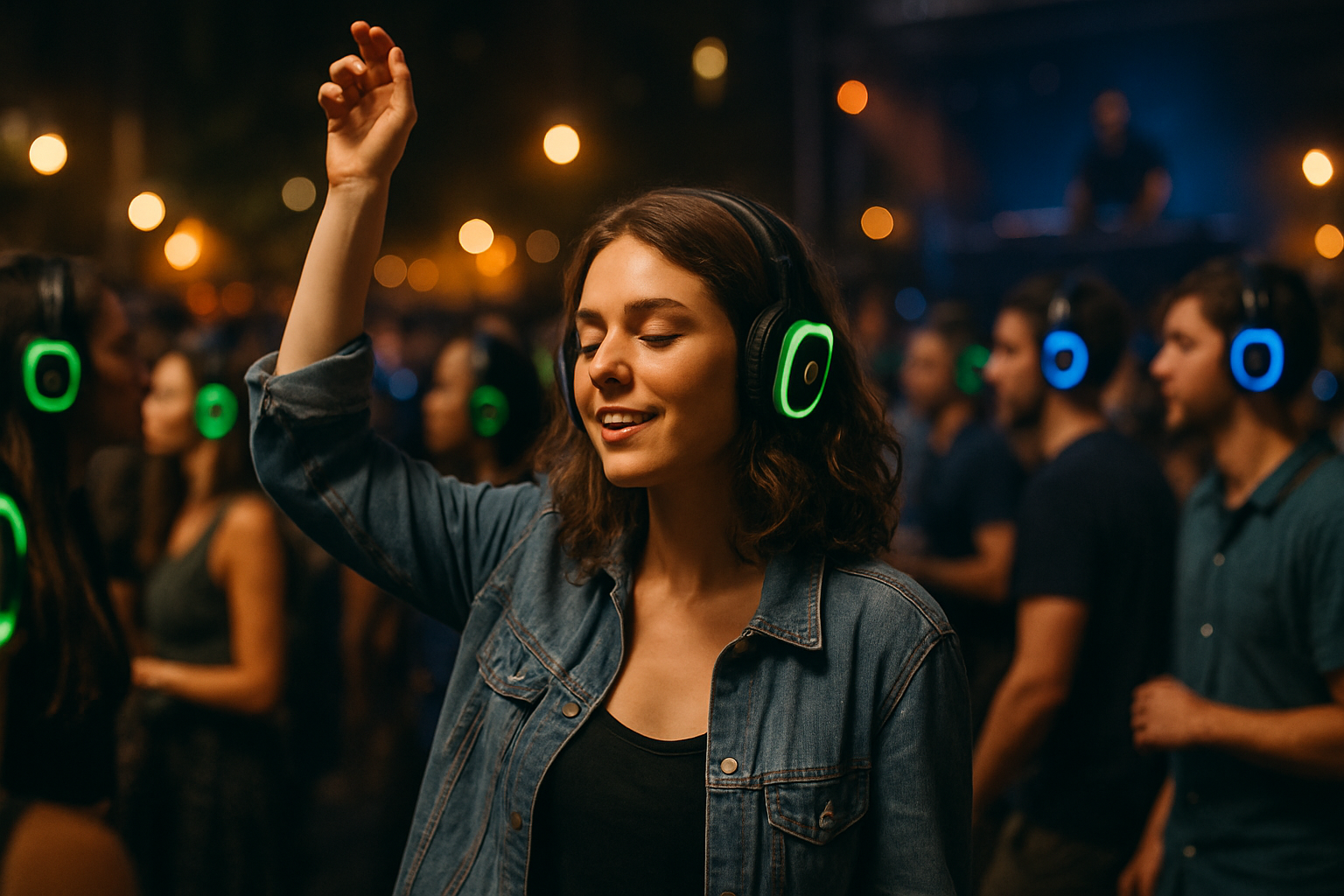Sonic Sanctuaries: The Resurgence of Silent Discos
In a world dominated by sensory overload, a peculiar trend is gaining momentum. Silent discos, where participants dance to music transmitted through wireless headphones, are carving out unique spaces in our social landscape. This phenomenon is not just about dancing; it's reshaping how we interact, experience music, and navigate public spaces. Read below to explore the fascinating world of silent discos and their impact on modern society.

The Genesis of Silent Revelry
Silent discos trace their origins to eco-activists in the 1990s, who sought ways to host outdoor events without disturbing wildlife. The concept quickly evolved, finding its way into music festivals and urban nightlife. This unconventional approach to partying addressed noise pollution concerns and offered a unique solution to venue curfews and sound restrictions.
The technology behind silent discos is relatively simple: wireless headphones receive signals from DJs’ transmitters, allowing participants to tune into different channels. This setup creates a surreal scene where observers see a crowd dancing in apparent silence, each person lost in their own auditory world while sharing a collective experience.
A Symphony of Social Dynamics
Silent discos represent more than just a novel way to party; they’re a microcosm of modern social interaction. Sociologists have observed fascinating behavioral patterns at these events. Participants can easily switch between social engagement and personal space by simply removing their headphones, offering a level of control rarely found in traditional nightlife settings.
This ability to modulate one’s social experience reflects broader trends in contemporary society, where individuals seek flexible, customizable social interactions. The silent disco format caters to this desire, allowing participants to be part of a collective experience while maintaining personal boundaries.
Breaking Sound Barriers
One of the most intriguing aspects of silent discos is their potential to foster inclusivity. These events have gained traction in unexpected places, from retirement homes to hospitals. For individuals with hearing sensitivities or those in environments where loud music would be disruptive, silent discos offer a way to participate in communal music experiences.
This adaptability has led to innovative applications. Libraries have hosted silent disco events to attract younger patrons, while some cities have organized silent disco walking tours, blending music, exercise, and urban exploration. These creative uses highlight the versatility of the concept and its potential to reimagine public spaces and community engagement.
The Psychology of Shared Silence
The psychological impact of silent discos is a subject of growing interest among researchers. Participants often report a heightened sense of connection with fellow dancers, despite the apparent isolation of wearing headphones. This paradox speaks to the complex nature of human social bonds and the role of shared experiences in fostering community.
Moreover, the ability to switch between multiple music channels at will taps into the modern preference for personalization and choice. This feature allows individuals to curate their experience in real-time, reflecting the broader trend of on-demand content consumption in other aspects of life.
Environmental and Social Implications
From an environmental perspective, silent discos offer significant advantages. By eliminating the need for large speaker systems, they reduce energy consumption and minimize noise pollution. This eco-friendly aspect aligns with growing environmental consciousness, particularly among younger generations.
Socially, silent discos challenge traditional notions of public and private space. They create temporary zones where the boundaries between individual and collective experiences blur, offering a unique lens through which to examine contemporary social structures and interactions.
The Future of Soundless Symphonies
As silent discos continue to evolve, they raise intriguing questions about the future of social gatherings and music consumption. Will this trend lead to more personalized, technology-mediated social experiences? How might it influence urban planning and the design of public spaces?
The phenomenon also intersects with broader discussions about technology’s role in shaping social interactions. While some critics argue that headphone-based events further isolate individuals in an already disconnected world, proponents see silent discos as a creative solution to noise restrictions and a way to bring diverse groups together in shared experiences.
As we navigate an increasingly complex social landscape, silent discos stand as a testament to human creativity in adapting to urban challenges and changing social norms. They offer a unique blend of communal experience and personal space, reflecting broader trends towards flexible, technology-enabled social interactions. Whether seen as a quirky trend or a glimpse into the future of social gatherings, silent discos undoubtedly provide a fascinating case study in contemporary social dynamics.





